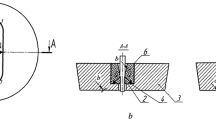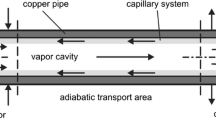Conclusions
-
1.
The heating time for disks of the thicknesses indicated does not limit the possibility of using automatic lines for low-distortion heat treatment in dies. To increase the throughput of the line (for heat treatment of disks 10 mm thick, for example) it is possible to use multiposition heating of the parts, multirow equipment, etc.
-
2.
To reduce distortion during heat treatment to the minimum, we recommend quenching in dies for dat parts with the following thicknesses:<-3 mm for parts made of carbon steels U7 and U8;≤10 mm for parts made of structural alloy steels of the 65G type;≤10 mm for carburized steel of the 20Kh type.
Similar content being viewed by others
Literature cited
S. S. Iskhakov et al., "Automatic apparatus for heat treating flat parts", Metalloved. Term. Obrab. Met. No. 11, 17 (1971).
Additional information
Scientific-Research Institute of Technology of tractor and Farm Machinery Construction. Translated from Metallovedenie i Termicheskaya Obrabotka Metallov, No. 4, pp. 4–6, April, 1979
Rights and permissions
About this article
Cite this article
Iskhakov, S.S., Zhdanova, E.D. & Prokhorov, N.A. Permissible thickness of parts quenched in dies. Met Sci Heat Treat 21, 246–249 (1979). https://doi.org/10.1007/BF00775099
Issue Date:
DOI: https://doi.org/10.1007/BF00775099




